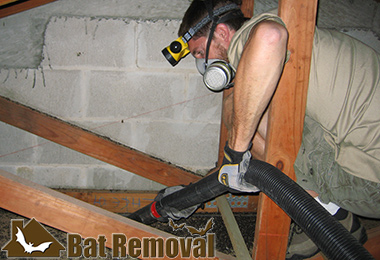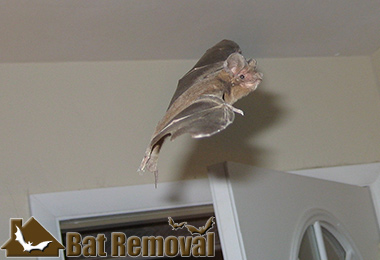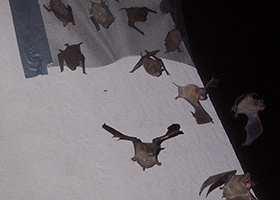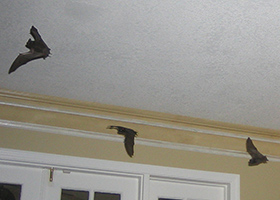Baltimore Bat Removal
Welcome to Baltimore Bat Removal! We are Maryland bat removal specialists. It is important to know that bats are protected by Maryland law, and are beneficial animals to have in the environment. We do not kill any bats during our bat removal process. Never hire a pest control company or anyone who says they are a Baltimore bat exterminator. For correct and effective bat removal, you want a company that specializes in humane bat colony extraction. Our process is not only the only legal method in Maryland, but it is the most effective. We have a 100% success rate in our bat control process. We perform our industry-best 32-point inspection of your house or building, and seal shut all bat entry holes down to 1/4 inch as part of the removal process, during which we remove the colony via special one-way exclusion devices specific to your architecture. Once all bats are safely out, we permanenetly bat-proof the structure. We also provide guano (bat droppings) removal and decon. Click on our Baltimore Bat Control Prices page to find out more about our prices for bat control work. We work 24/7/365, and would love to talk to you about your bat problem. Call us any time at 443-355-4443 to discuss it, discuss our pricing, and if you wish, set up an appointment at your convenience, often same-day.

Baltimore Building and Attic Inspections

No-kill Maryland Bat Extraction

Guano Cleanouts - Serving all of Maryland
Call 24/7 to discuss your bat problem.
Same-day or next-day appointments.
32-point inspection of your property.
Written estimates for bat removal project.
Fully state licensed and insured.
Residential and commercial service
100% no-kill Baltimore bat extraction
Complete bat-proofing of your building
Compliance with all Maryland, federal laws
Guano removal and attic decontamination
Our Service Range - 443-355-4443



Can Bats Chew Through Construction Materials
According to the definition of the term 'chew', this is a process used during food consumption. With regards to the natural diet of the bats, they will usually chew insects. When you think about the damage that the bats can create on your house, it will not be something similar to the damage of the rodents. Mice, and rats are known for their powerful teeth that enables them to gnaw on different materials.
Can Bats Gnaw on Wood and Other Construction Materials
Now let us analyze if the bats have the same power to gnaw on wood materials. There are no documented reports that will prove that the bats have the capacity to chew on woods and different construction materials. Here are some reasons why bats will not chew woods.
They Have Tiny Fangs
The fangs of the bats are designed to pierce and not to chew. In fact, it will not be able to pierce through our skin if we are wearing thick clothes. This means that it will not have the capacity to tear a material as tough as wood. While we understand that there will be times when you will notice that there will be chew marks on the wood, the culprit may not be the bat. There may be additional infestation going in your house.
There Are No Reason for Them to Chew Woods
There should be a reason behind every behavior. For instance, rodents are chewing tough materials to control the incessant growth of their incisors. With regards to the bats, their teeth are designed to chew insects. The sharp fangs can pierce through the tough exoskeleton of the insects. They do not need to chew woods since they can easily fit through small gaps.
Bats Are Secondary-Cavity Nesters
It has been widely documented that the bats are secondary-cavity nesters. This means that they will only be occupying the abandoned nest of other animals. This is also the reason why an existing habitat plays an important role in the survival of the bats. Other animals will drill on woods and walls to create a nest. Once they leave it behind, the bats will take over them.
What to Do?
In case you are worried that the bats can enter your house through your wooden walls, there are different materials that you can use to seal the existing holes. You may use steel plate, plank of wood, wire mesh, caulk, etc. It is essential that you perform the sealing process on autumn and winter. You do not want to accidentally trap the baby bats inside your house. They do not have the ability to fly and hunt for their own food and will eventually die if you separate them from their mother.
While the bats will not chew woods, their urine and dropping will have an acid content that can corrode different materials including wood, insulation materials, metallic objects, etc. There are different removal and exclusion methods that will keep these flying mammals in their natural environment.

